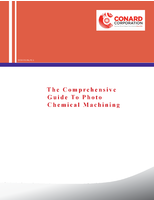EPA Determines Aircraft Emissions contribute to climate change.
Share:
Press Release Summary:
U.S. EPA finalized one determination under Clean Air Act that GHG emissions from certain aircraft engines contribute to pollution that causes climate change and endangers public/environmental health. Findings relate to CO2, CH4, N2O, HFCs, PFCs, and sulfur hexafluoride (SF6). EPA is not issuing emissions standards for aircraft engines in this action, and said findings, which do not apply to small piston-engine planes or military aircraft, support President Obama's Climate Action Plan.
Original Press Release:
EPA Determines that Aircraft Emissions Contribute to Climate Change Endangering Public Health and the Environment
(WASHINGTON) – The U.S. Environmental Protection Agency (EPA) today finalized a determination under the Clean Air Act that greenhouse gas (GHG) emissions from certain types of aircraft engines contribute to the pollution that causes climate change and endangers Americans’ health and the environment. The findings are for carbon dioxide (CO2), methane, nitrous oxide, hydrofluorocarbons (HFCs), perfluorocarbons (PFCs), and sulfur hexafluoride (SF6), all of which contribute to GHG pollution that represents the largest driver of human-caused climate change. These particular GHGs come primarily from engines used on large commercial jets.
“Addressing pollution from aircraft is an important element of U.S. efforts to address climate change. Aircraft are the third largest contributor to GHG emissions in the U.S. transportation sector, and these emissions are expected to increase in the future,” said Janet McCabe, EPA’s Acting Assistant Administrator for Air and Radiation. “EPA has already set effective GHG standards for cars and trucks and any future aircraft engine standards will also provide important climate and public health benefits.”
The agency is not issuing emissions standards for aircraft engines in this action. The final endangerment and contribution findings for aircraft engine GHG emissions are an important step that EPA must take prior to adopting domestic GHG engine standards. EPA anticipates that the International Civil Aviation Organization (ICAO) will formally adopt its environmental committee’s February 2016 agreement on international aircraft CO2 standards in March 2017. EPA anticipates moving forward on standards that would be at least as stringent as ICAO’s standards.
The rulemaking process for aircraft GHG emissions will provide opportunities for industry, NGOs and other interested parties to provide their input through public review and comment.
In 2009, EPA issued similar findings regarding GHG emissions from new cars and light trucks. The agency determined that those vehicles contribute to GHG pollution that threatens Americans' health and welfare by leading to long-lasting changes in our climate that can have a range of negative effects today and in the future. Since then, the science on human-induced climate change has strengthened, further supporting today’s final determination.
Today’s findings support the goals of the President’s Climate Action Plan to reduce emissions from large sources of carbon pollution. U.S. aircraft emit roughly 12 percent of GHG emissions from the U.S. transportation sector and 29 percent of GHG emissions from all aircraft globally. Under the Clean Air Act, EPA consults with the Federal Aviation Administration as it develops aircraft engine emissions standards. By law, any standards EPA sets must not cause a significant increase in noise or adversely affect safety.
Today’s findings do not apply to small piston-engine planes (the type of plane often used for recreational purposes), or to military aircraft.
For more information on the final aircraft endangerment and cause or contribute findings, visit http://epa.gov/otaq/aviation.htm.




